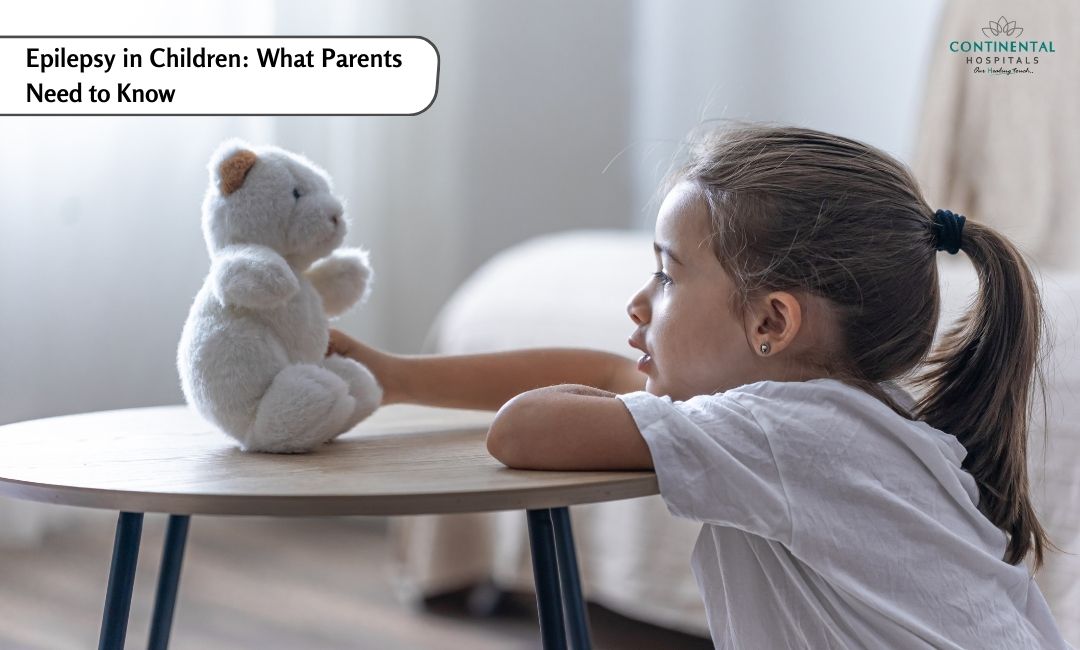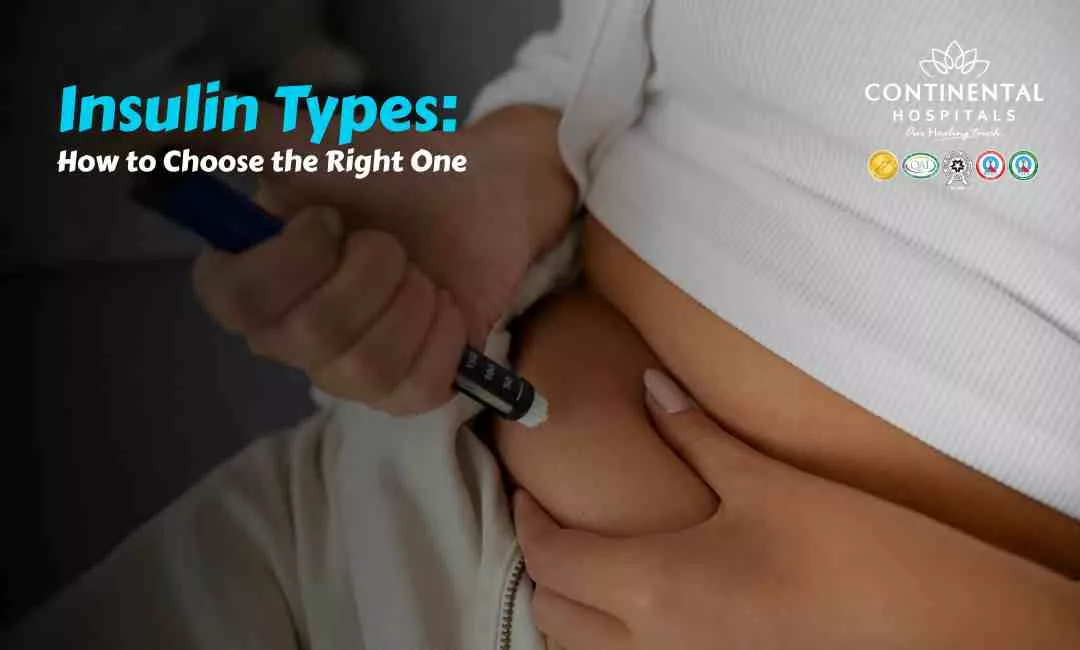Epilepsy is a neurological disorder characterized by recurrent seizures, affecting people of all ages, including children. As a parent, discovering that your child has epilepsy can be overwhelming and frightening. However, with proper understanding and management, you can help your child lead a fulfilling life. In this blog post, we'll explore what epilepsy is, its causes, symptoms, diagnosis, treatment options, and what you, as a parent, need to know to support your child effectively.
What is Epilepsy?
Epilepsy is a chronic disorder of the brain characterized by unpredictable seizures. Seizures occur due to sudden, excessive electrical activity in the brain, leading to temporary disruption of normal brain function. These seizures can vary in intensity, duration, and manifestation, depending on which part of the brain is affected.
Causes of Epilepsy in Children:
Genetic Factors: Certain genetic mutations or inherited conditions can predispose a child to epilepsy. These may include conditions like Dravet syndrome, tuberous sclerosis, or certain chromosomal abnormalities.
Brain Abnormalities: Structural abnormalities in the brain, such as malformations of cortical development, brain tumors, or brain injuries due to trauma during birth, can lead to epilepsy.
🥗 Healthy Plate Challenge
🍽 Add Your Favorite Dish
Pick Your 6 favorite foods, eat, and see the results.Drag & drop foods onto your plate.
Drop Food Here
Perinatal Injuries: Events occurring around the time of birth, such as oxygen deprivation, head trauma during delivery, or neonatal strokes, can increase the risk of epilepsy in children.
Infections: Certain infections, especially those affecting the brain such as meningitis, encephalitis, or brain abscesses, can trigger epilepsy in children.
Metabolic Disorders: Metabolic disorders like mitochondrial disorders, inborn errors of metabolism, or electrolyte imbalances can disrupt brain function and lead to seizures.
Developmental Disorders: Children with certain developmental disorders like autism spectrum disorder or neurofibromatosis may have an increased risk of epilepsy.
Immune Disorders: Some autoimmune disorders, such as autoimmune encephalitis or Rasmussen's encephalitis, can cause inflammation of the brain leading to seizures.
Febrile Seizures: These are seizures triggered by a high fever in young children, typically between the ages of 6 months and 5 years. While most febrile seizures are benign and do not lead to epilepsy, in some cases they can be a risk factor.
Stroke: Stroke in children, though rare, can cause brain damage that leads to epilepsy.
Toxic Exposure: Exposure to certain toxins or drugs during pregnancy or early childhood can increase the risk of epilepsy in children.
If you suspect that a child may have epilepsy or if they have been diagnosed with epilepsy and you're seeking advice on managing the condition, it's crucial to consult with a Neurologist.
Signs and Symptoms of Epilepsy in Children:
Staring Spells: Absence seizures, also known as petit mal seizures, may cause the child to briefly stare into space and become unresponsive. These episodes typically last for a few seconds and may go unnoticed.
Jerking Movements: Generalized tonic-clonic seizures (formerly known as grand mal seizures) involve sudden stiffening of the body (tonic phase) followed by rhythmic jerking movements (clonic phase). These seizures are often dramatic and easily recognizable.
Unusual Sensations or Feelings: Some children with epilepsy may experience unusual sensations or feelings before a seizure occurs. These can include tingling sensations, déjà vu, fear, or unusual tastes or smells.
Temporary Confusion or Memory Loss: After a seizure, children may experience temporary confusion, memory loss, or difficulty concentrating.
Repetitive Movements: Some types of seizures may cause repetitive movements such as lip-smacking, chewing, or picking at clothes.
Loss of Awareness or Consciousness: During certain types of seizures, children may lose awareness of their surroundings or become unconscious.
Sudden Falls: Seizures can cause sudden falls, which may result in injuries if the child is not adequately protected.
Changes in Behavior or Mood: Epilepsy can sometimes cause changes in behavior or mood, such as increased irritability, aggression, or emotional outbursts.
Sleep Disturbances: Children with epilepsy may experience sleep disturbances, including frequent nighttime awakenings or daytime sleepiness.
Diagnosis of Epilepsy in Children
Medical History: The doctor will start by taking a detailed medical history, including information about the child's seizures, developmental milestones, family history of epilepsy or other neurological conditions, and any other relevant medical information.
Physical Examination: A thorough physical examination will be performed to check for any signs or symptoms of neurological abnormalities.
Electroencephalogram (EEG): EEG is a test that measures the electrical activity of the brain. It's a key tool in diagnosing epilepsy. Children may undergo an EEG while awake and asleep to capture different brain wave patterns.
MRI (Magnetic Resonance Imaging): MRI scans can provide detailed images of the brain, helping to identify any structural abnormalities or lesions that may be causing seizures.
Blood Tests: Blood tests may be done to check for metabolic or genetic conditions that could be associated with epilepsy.
Video EEG Monitoring: In some cases, children may undergo video EEG monitoring in a hospital setting, where their brain activity is continuously monitored while being recorded on video. This can help capture seizures and provide more information about their type and characteristics.
Neuropsychological Testing: Neuropsychological tests may be performed to evaluate cognitive function, memory, and other aspects of brain function that may be affected by epilepsy.
Other Diagnostic Tests: In some cases, additional tests such as a lumbar puncture (spinal tap) or genetic testing may be recommended.
Diagnostic Criteria: The diagnosis of epilepsy in children is typically made based on the presence of recurrent seizures. The International League Against Epilepsy (ILAE) provides guidelines and criteria for diagnosing epilepsy based on clinical features, EEG findings, and other diagnostic tests.
Monitoring and Follow-Up: Once epilepsy is diagnosed, regular follow-up appointments with a healthcare provider are important to monitor seizure control, adjust treatment as needed, and address any other medical or developmental concerns.
Treatment of Epilepsy in Children:
Treatment for epilepsy in children aims to control seizures, minimize their frequency and intensity, and improve overall quality of life. The most common treatment approaches include:
Medications: Antiepileptic drugs (AEDs) are the primary treatment for epilepsy. These medications help stabilize electrical activity in the brain and reduce the likelihood of seizures.
Dietary therapy: The ketogenic diet is a high-fat, low-carbohydrate diet that can be effective in reducing seizures in some children. The diet works by causing the body to produce ketones, which are chemicals that can help to control seizures. Other dietary therapies, such as the modified Atkins diet, may also be helpful for some children.
Surgery: In some cases, surgery may be recommended to remove the area of the brain responsible for seizures, particularly if medications and other treatments are ineffective.
Lifestyle modifications: In addition to medical treatments, certain lifestyle modifications may help manage epilepsy in children, such as getting enough sleep, avoiding triggers that can provoke seizures (like flashing lights or specific foods), and participating in regular physical activity.
Managing Epilepsy as a Parent:
Managing epilepsy as a parent requires careful planning and vigilance to ensure the safety and well-being of both the child and the family. This involves educating oneself about the condition, adhering to medication schedules, creating a supportive environment at home, and implementing strategies to minimize triggers and risks. Regular communication with healthcare providers, school personnel, and caregivers is essential for proper management and quick response to any seizures that may occur. Additionally, fostering open dialogue with the child about their condition helps empower them and promotes self-management skills as they grow older. Through dedication, patience, and a strong support network, parents can effectively navigate the challenges of raising a child with epilepsy while promoting their overall health and quality of life.
Epilepsy can pose challenges for both children and their families, but with the right knowledge, support, and management strategies, children with epilepsy can live full and meaningful lives. By understanding the condition, advocating for your child's needs, and working closely with healthcare professionals, you can help your child navigate the journey of epilepsy with confidence and resilience. Remember, you are not alone – there are resources and support available to help you every step of the way.
If you suspect that a child may have epilepsy or if they have been diagnosed with epilepsy and you're seeking advice on managing the condition, it's crucial to consult with a Neurologist.
Related Blog Post:
1. Headache Hacks: Simple Tricks to Ease Pain Fast
2. Home Remedies for Sinusitis Relief
3. Early Signs of Alzheimer's: How to Recognize Them
.webp)














